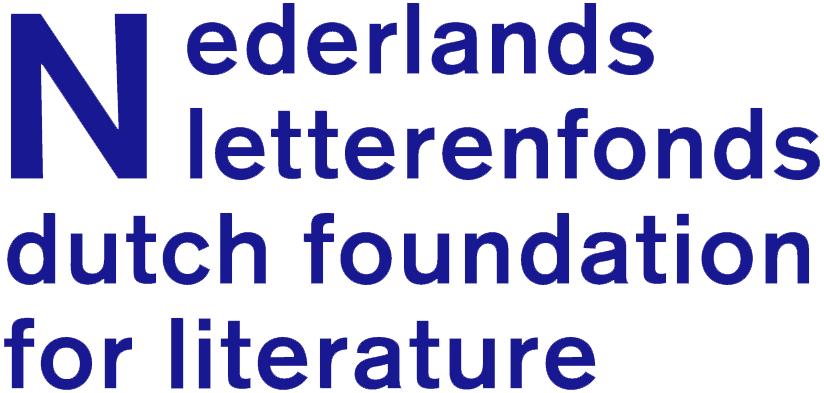Poet
Sophie Collins

Sophie Collins
(United Kingdom of Great Britain and Northern Ireland, 0)
Biography
Sophie Collins is a poet, editor and translator whose writing blurs the boundaries between conceptualism and lyricism, and questions received ideas of gender and selfhood. In 2016 a selection of her poems appeared in Penguin Modern Poets 1: If I’m Scared We Can’t Win, alongside work by Anne Carson and Emily Berry. small white monkeys, a text on self-expression, self-help and shame, published in 2017, was written during a residency at Glasgow Women’s Library. Her first full poetry collection Who Is Mary Sue? (Faber, 2018) was a Poetry Book Society Choice and won the 2019 Michael Murphy Memorial Prize. Collins is currently a lecturer at the University of Glasgow and was elected as a Fellow of the Royal Society of Literature in 2018.Collins grew up in Bergen, North Holland, and translates from the Dutch. As part of a PhD in translation at Queen’s University Belfast, Collins edited Currently & Emotion, an anthology of contemporary poetry translations aimed at changing perceptions of translation from that of “a kind of literary service that simply facilitates access to foreign and/or historical texts, to one that recognises an influential, political and manipulative act”.
"I tentatively offer ‘intimacy’ – which I use in the Platonic sense of ‘close familiarity or friendship’, rather than euphemistically – as a term that can establish the basis for an alternative conceptualisation of translations and the translation process. This coinage began with the observation that, while ‘fidelity’ implies the presence of a primary source of power, ‘intimacy’ indicates a mutual, consensual and willing exchange between two or more subjects, without referencing (an) authority at all."
Power dynamics are a subject for interrogation across all of Collins’s work. She has written in response to many contemporary artists’ work while expressing a desire to trouble the conventional ekphrastic dynamic, in which the text offers a straightforward description of the artwork in question. small white monkeys is a cross-genre text incorporating text and image, with writing that moves between forms and resists genre. It is an exploration of assault and its resultant trauma. Where we see text which might look like poetry (in short, left-justified lines) we find what appears to be found text and self-help ‘affirmations’: “I am not wrong: Wrong is not my name.” There is a distaste for self-help which categorises it as a lesser form of writing, and Collins asks us to re-evaluate our ideas of both meaning and value:
Understand the extreme creative potency of your thoughts.
The experience of shame itself indicates the presence,
whether realised or latent, of a powerful imagination.
(‘WAYS (SELF-LOVE)’)
The book ends by underlining the importance and potential of creativity:
A woman who suffers can indeed relieve her suffering by becoming the mind which creates: creates worlds, creates texts, creates herself; creates personal/private/public space(s) and, via the latter, other women. This is a final affirmation, then: a woman who suffers can relieve her suffering by becoming the mind which creates. And that is exactly what I believe we must do.
Who Is Mary Sue?, Collins’s debut full-length collection, can also be considered cross-genre, combining text which is essayistic, aphoristic, allegorical, found and generated. The collection’s architecture is challenging and expansive, incorporating large amounts of white space. It starts with' Preface' which in turn discusses an unnamed “novel”: “At the foot of these stories – at once ludicrously vague and full with detail – is a frayed hole, a conspicuous lack of identity […]”. In a later sequence, 'A Whistle in the Gloom', the narrator meditates on The Story of O, in which the protagonist is described as "an initial – a conspicuous lack":
I allow myself to comprehend O not as an initial but as a personal pronoun; a Rubenesque alternative to I; an innovation in grammar signifying a tacit acknowledgement of the paradoxes of self-expression; a room to live and breathe in, with some honesty.
Within this framework, then, Collins gives herself freedom and space to explore, express, argue and entertain contradictions. Many of the more recognisable lyric poems relate or refer to female narratives, sometimes violent and vengeful. And where an inanimate scaffold is personified it is also personified as female:
She told me that good foundations are essential
but the men who had put her together
hadn’t taken advantage of the right opportunities.
Now, each day, someone came by
called her ‘unsafe’ and also ‘a liability’
then left, failing to initiate the dismantling process
that yes would have been painful
and slow, but kinder.
(‘HEALERS’)
The scaffold subsequently collapses in sequence. Poems such as this have a thrilling mysteriousness – one which Collins admits she also still experiences and values in relation to her own writing, embracing the subconscious as a part of the creative process. Another mysterious and potentially allegorical tale, 'The Engine’ is split into three parts and divided across the book. But though we might expect self-expression we receive terse, unpacked, dream-like action:
There was a stone on the beach, and the stone was important; when I picked it up I realised I could not go back to the city.
There were feathers on the beach and the feathers were our father. I picked them up to make them part of our inventory. They smelled sweet like airborne diseases.
This is typical of the way Collins’s poetry both reveals and resists, exposes and expunges the ‘I’.
In the titular sequence Collins appears to be making an argument, quoting other writers and thinkers liberally to come to a conclusion:
Something like: a woman who tries to invent in literature will fail, whereas a woman who succeeds in writing is believed to have done so to the extent that she has been able to accurately portray the details of her own life.
Collins commented on her extensive use of quotation in an interview: “The world is made of language; my world is irreversibly changed by having read and internalised the words of Denise Riley, Clarice Lispector, Jamaica Kincaid… Why paraphrase when I can cite?” (Interview with Sally-Shakti Willow for Northern Review). The poet and critic Stephanie Burt writes in the London Review of Books that:
(Collins’s) prose recalls recent lyric essays, by Claudia Rankine, Anne Boyer and others: paragraphs with a great deal of white space, unanswered questions, embedded quotations, and moments when the author seems to stop short. For every reader who finds this self-indulgent, another might feel seen.
But that “something like” is tellingly ambivalent and at one point the speaker slips into narrating her own essaying process: “I begin to collect quotations, responses.” Collins cites Lucy Ives as influence on the interaction between different types of writing and noted her interest in collections that “[work] self-reflexively and […] that incorporates a distinct critical standpoint” (Scottish Poetry Library podcast). The titular sequence ‘Who Is Mary Sue?’ operates on many levels, as a lyric essay and as a complex poem in its own right, informing itself and the work surrounding it. It is this sort of daring, distinctive and demanding writing that has garnered praise from critics and readers. As Jade Cuttle writes in the Guardian:
Who Is Mary Sue? is a startlingly original text that requests a different mode of reading, one that encourages avoiding labels and easy conclusions. Readers will emerge more interrogative, more invested in the stakes of sexist, limited criticism, after finishing this corrective and captivating debut.
© Emily Hasler
small white monkeys (Book Works, 2017)Who Is Mary Sue? (Faber & Faber, 2018)
Poems
Poems of Sophie Collins
Sponsors





Partners
LantarenVenster – Verhalenhuis Belvédère

